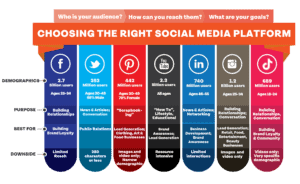
Learning from the success of others can be a great way towards achieving your goals. Apple is a prime example of exemplary business models, and their loyal customers understand it. While it's not wise to duplicate their marketing strategies exactly you can still learn from them and create your own. Here are some ways Apple has made it a success. Continue reading to find out more. Below are their top marketing strategies.
Storytelling
Storytelling was almost absent during the dark years in Apple's story. When Steve Jobs returned to Apple, however, storytelling became a central part of Apple's Marketing Strategy. Storytelling is still a common part of Apple's marketing strategy, as evidenced by their recent "Share Your Gifts" ad, which features the Apple product in a small supporting role. Despite the small role, this ad points out that storytelling is important in branding.
While other brands are competing with Apple for customers' attention, the company's storytelling is what draws its customers in. It's how they connect with their brand, which ultimately translates into long-term brand loyalty. Apple's famous speech, "A Simple Story tells A Thousand Words," tells an Apple story. It creates deep emotional bonds.
Placement
Apple's marketing strategy may not be new but there are a few points worth mentioning. The company's emblem has been seen in more number one films that Nike and McDonald's combined. Comparatively, Coca-Cola is featured in 96 films in the top 334 US films and Apple in 144. This pattern of product placements will continue in the UK. It will be allowed on television and in sports, but not in news broadcasts or religious programs.

It is not hard to see why product placements are so popular in Hollywood. The brand has used Apple products in numerous Hollywood movies and TV shows like "Mad Men" (and "The Office"), among others. Apple products often take center stage, either in the background or at the forefront of a scene. One episode of "The Office" featured Michael buying a Video iPod for Ryan. As a result, it was prominently displayed on the desks of interns.
Reminding Apple's History to Customers
Apple was at the edge of extinction when Steve Jobs returned in 1996 to Apple. The media was awash with negativity, but Jobs determined to make an advertisement campaign that would recall Apple's glory days. The Think Different campaign became one of the most talked-about of the decade. Apple has not looked back since.
Advertising
The ads of Apple have become a staple of the marketing strategy, and for good reason. They're simple and to the point, capturing the hearts and minds of their target audience. They advertise the product's launch and every year thereafter. Advertising Apple's products is aimed at making customers aware of their superior experience and ease of use, which is what sets it apart from competitors. The company's marketing mix is simple and innovative. It connects with its target markets in a way which has helped it to become one of most powerful brands in the globe.
Apple advertises through both traditional media and uses non-traditional methods as well. They work with corporate resellers to establish tie-ups. The locations they choose are determined by their sales and size. Apple products are widely available all over the globe, which allows them to reach a wider audience and increase brand awareness. Apple's products are advertised aggressively, using a combination of traditional and nonconventional marketing methods. Apple uses social media in addition to traditional advertising to promote its products.

FAQ
What is Content Marketing without an Agency?
No! You can create high-quality content with many tools online. Plus, agencies tend to charge a premium price for their services.
What are the seven steps of content marketing
The seven-step process of content marketing involves:
-
Identify the problem
-
Find out what's currently working
-
Find new ideas
-
Develop them into strategies
-
They are worth a try
-
Take measurements
-
Keep going until you find the right solution.
This strategy is practical for both large and small businesses.
How can content marketing strategies be effective?
First, decide what type of content you want. This will help you create a content marketing plan that is effective. Then, decide who your target market is and how they use the internet. Next, choose the best channels to reach your target audience. Finally, choose the right keywords for each channel and write compelling copy for each piece of content.
What does content marketing have to offer that is different from traditional advertising.
Traditional advertising focuses on getting attention, while content marketing focuses on providing value. Traditional advertising is often a waste of money because most people ignore it. Content marketing will result in much higher engagement rates.
What is Content Strategist, and what does it do?
Content strategists help brands tell stories through engaging messages that are emotionally connected to their audience. They are storytellers that tell stories about brands to help people make decisions and then take action.
Content strategists are skilled at creating strategies that will engage customers and prospects. They combine storytelling and data analytics to create experiences that encourage customers to visit stores and buy products.
They know how to incorporate social media platforms into their campaigns. They use technology tools such virtual reality and video to deliver exceptional customer experiences.
In addition to creating digital content, content strategists translate these ideas into concrete plans that marketers need to execute. This includes creating content that can be used on different media (such as television or print), and developing creative briefs. Budget management is also an important part of the job.
Why do you need a content marketing strategy?
Content marketing isn't just about producing quality content. It's about building relationships, engaging people emotionally, solving problems and helping them to solve their problems. This requires a deep understanding of how people act online.
This is exactly what Content Marketing Strategy does. Content Marketing Strategy is a great way to understand customers' psychology and engage them in the best possible ways.
It can also help increase your conversion rate to increase your profit.
However, why would you choose to invest in Content Marketing Strategy when there are many other options available?
Content Marketing Strategy is far better than any other marketing type.
So whether you are looking to increase brand awareness or sell products, a well executed Content Marketing Strategy is the best way to go.
Statistics
- This marketing strategy landed Ford a 15.4% conversion rate. (neilpatel.com)
- In fact, would pay more for a better customer experience, and 86% of B2B buyers would pay more. (neilpatel.com)
- Content marketing produces 3X more leads per dollar spent. Content marketing costs 62% less than traditional marketing. (criteo.com)
- Progress indicators (0–100%) allow each team member to see how attainable each goal is and understand what remains to be accomplished. (semrush.com)
- According to the Content Marketing Institute, 70% of B2B marketers and 86% of B2C marketers surveyed use content marketing in some form or other. (criteo.com)
- Measure your goals with a progress indicator of 0-100%. Make your goals collaborative and transparent (semrush.com)
- Companies that use content marketing see approximately 30% higher growth rates than businesses not using it. (mailchimp.com)
- Seventy-two percent business to business (B2B) (mailchimp.com)
External Links
How To
Infographic Creation Tips for Content Marketing
Infographics are one of the most effective ways to explain complex concepts simply, making information easy to understand. Use infographics as a tool to promote your content marketing message.
To create an infographic using design software such Adobe Illustrator, Photoshop or other similar programs, you will need Adobe Illustrator. You can use these programs to draw out different shapes and elements to represent your data, then add colors and fonts to make everything look nice. Once you have your design ready, upload images from Unsplash or Pixabay to add to it.
Check out existing infographics online to get some ideas. If you want to show calories in certain foods, then you can take a picture or diagram of a food pyramid, and add pictures of the foods. Or, you might choose to look up how much sugar is in soda pop and change that number to a picture of a bottle of Coke.
Once you have created your infographic it is possible to share it via social media channels like Facebook, Twitter and Google+. This allows people to learn more about the concept, even if they aren't familiar. If you decide to post your infographic on social media platforms, include hashtags so others can see what you're talking about. Hashtags enable users to follow along in conversations related to specific topics.
Try to make your infographic posts shorter than you normally would if you create one. An average blog post can be anywhere from 2000 to 5000 words long, while an infographic only requires 500 to 1000 words. This means you can easily convey more information with less space.
Your infographic should be easy to read for some viewers. You should use large fonts for your infographics. Don't rely too heavily upon color. It is important that all text is legible.
These are additional tips:
-
Choose an Infographic Template. There are many online templates that you can download or print. The most popular ones include Canva, Piktochart, and Google Slides.
-
Your Infographic is ready. You can use the template to create your infographic. You can use any type of media that is appropriate for your audience. In this example, photos of Seattle restaurants might be used to create an infographic about Seattle's best restaurants.
-
Add text. Once you've created your infographic, add text using Microsoft Word, PowerPoint, or Canva.
-
Add Images. Your infographic can also include images. These images can include charts, graphs and icons. Make sure the picture is relevant to your topic before you add it.
-
Make It Interactive. Interactive elements like buttons, maps and links can be added to your website. This will increase engagement with your audience.
-
Share. Share your infographic after you're done.
-
Measure. Your infographic's performance. Did people click through? Did they sign up for your email list? What was their reaction when you showed them your infographic
-
Improve. Are there ways you could improve your infographic? What could you do better next year?
-
Repeat. Do this again!